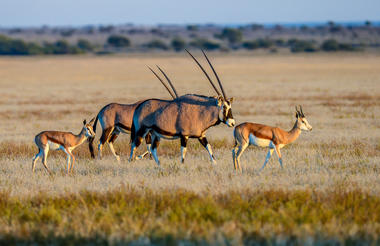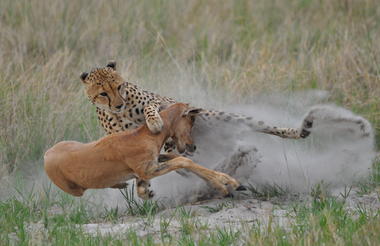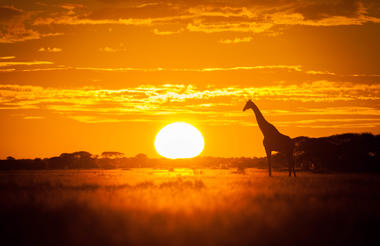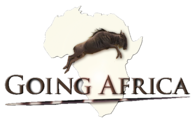At Victoria Falls, the earth splits open and swallows one of Africa’s greatest rivers, the mighty Zambezi, creating the largest sheet of falling water on earth. As the water hits the narrow depths of the Batoka Gorge beneath, it blasts a cloud of mist skywards, lending the falls their local name ‘mosi-oa-tunya’ (the smoke that thunders). When the Zambezi is at its fullest, the mist hangs a permanent raincloud above the falls, showering visitors on even the sunniest of days and visible for miles around.
Above the falls on the upper Zambezi, boats cruise the tranquil water at sunset while the distant spray catches the fading light downstream. Below the falls, the Batoka Gorge’s rocky walls funnel the lower Zambezi into a chain of world-class rapids, prime for white water rafting.
Aside from being a UNESCO world heritage site and a natural world wonder, Victoria Falls also forms a natural border between Zimbabwe and Zambia. The falls can be seen from both countries, and for the most part the same activities are offered on both sides, from helicopter scenic flights to village visits and souvenir shopping.
Whether your idea of getting away from it all is a relaxed high tea in colonial grandeur or a heart-stopping bungee jump off a bridge, Victoria Falls keeps both the faint of heart and the most insatiable of adrenalin junkies busy for days.
From Zambia, a side on view of the falls is on offer with views into the Batoka Gorge, as well as the possibility of perching yourself at the edge of the falls on the vertigo-inducing Livingstone Island.
From Zimbabwe, you’ll get a full-frontal view of three quarters of the falls’ 1.7km wide curtain of water from viewpoints and footpaths meandering through a rainforest kept hot and humid by the spray of the falls.
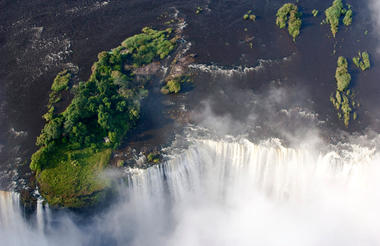

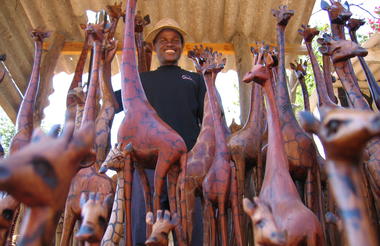
The Linyanti is a safari addict’s bush nirvana. One of the most remote and exclusive pockets of Botswana, this pristine wilderness is what great game viewing and wildlife documentaries are made of.
Only private concessions are on offer here, where the rules are flexible and the crowds can’t go. The Linyanti is not just for ticking off the big game; it also has a knack for delivering lesser-spotted bucket list items, whether it’s a rare bush pig or that long-searched-for wild dog.
Very few camps operate in the Linyanti. Each offers different habitats and landscapes with one common theme: a strong track record for game viewing during Botswana’s drier winter months. Together with the Chobe Riverfront, the Linyanti homes the highest density of African elephants in the world. Many camps also offer seasonally dependent water-based experiences, be it on a spillway, river, lagoon or channel to break up the game drive routine.
Just one of the Linyanti’s concessions alone is twenty times the size of Manhattan, yet only forty people can stay during any night of the year. If Botswana puts a heavy emphasis on preserving the wild and taking only a handful of people into the bush, then the Linyanti is where this concept is taken to the extreme.
Here, you can follow the big game off-road, whether in a white-knuckled pursuit of a lioness chasing buffaloes, or during a quiet crawl off-track to see wild dog puppies emerging from their den for the first time.
Possibilities exist for exploring the bush on foot for adrenaline-pumping game approaches, and many camps offer game viewing hides for a more relaxed approach to wildlife sightings, or even overnight sleep outs.


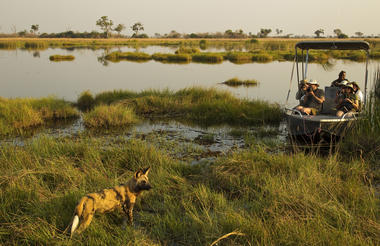
The Okavango Delta is where the wild things are: an immense, waterlogged oasis alive with elephants and birdlife, adrift in the middle of Kalahari sands. The real magic of the Delta lies in its water, trickling through from far away highlands, and spreading across the channels and floodplains.
During winter in the Kalahari, when the sun has baked the earth bare and turned the desert its driest, water fills the Okavango; transforming the floodplains into a Noah’s Ark of African wildlife.
As the water brings life to the delta, its local residents shape and recreate it. Termites slowly build mounds into islands, germinated with palm trees by passing elephants. Waterways open and close on the whim of wide-bottomed hippos, carving out channels where they crash through reeds, and leaving room behind them for exploration by mokoro.
The Okavango has many faces, which change throughout the year, prompted by that most unpredictable diva of all: the weather. Water levels rise and drop, expanding and shrinking islands, while animals move where the life is easiest and the grass greenest. In a few days, a sandy road driven by vehicle can become a waterway of unknowable depth, prompting a safari by boat instead.
Where and when you stay in the Okavango Delta will hugely influence what you do in the bush each day, the animals you’re most likely to see and finally, the safari experience you’ll have.
The delta’s watery heart is best discovered by mokoro through shallow channels and floodplains, as well as crossing the islands on foot. For less water and more of the big game, visit a camp on its drier edges (including Moremi Game Reserve and the Khwai Community Area), jump on a vehicle and seek out the animals hiding in the woodlands.
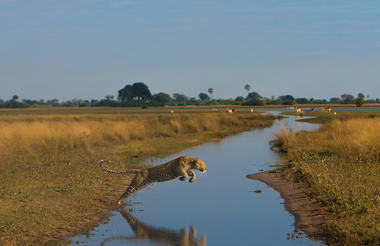
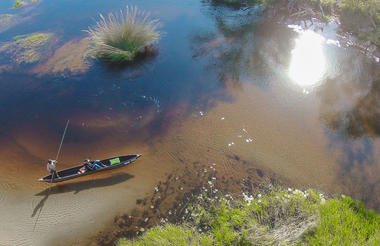
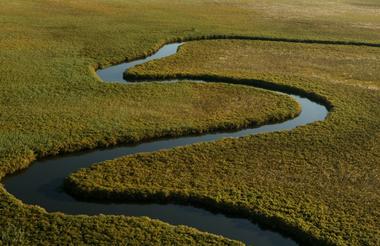
Modestly sized and largely under-visited, Nxai Pan is one of Botswana’s best-kept secrets for a desert safari. The action takes place around Nxai Pan itself and the park’s two waterholes, which keep wildlife in the area year-round.
In Nxai Pan the landscape is dominated by short, yellow grasses, which turn green with the summer rains; worn down to white soil where zebras have made paths across the pan. This is the finish line for Africa’s little-known but longest migration of mammals, when zebras arrive from the Chobe River to spend their days grazing on new growth during Botswana’s rainy season. At sunset, the view to the horizon is interrupted only by small clusters of acacia thorn, which hide jackals, bat eared foxes and even the occasional brown hyena.
Much of Nxai Pan can be explored in a day, however the real reason to visit is to take a slower pace and watch the waterholes as the wildlife arrives to drink. If you’re lucky, your patience might pay off as a hungry cheetah charges a thirsty springbok, sending a shower of dust over the waterhole.
For landscape photographers, the fat and famous Baines’ Baobabs are a half day trip from Nxai Pan itself. The baobabs sit on the edge of Kudiakum Pan, whose salt-encrusted surface provides a small hint of the vast saltpans further south in the Makgadikgadi.
Once the summer rains arrive, Nxai Pan’s dust is washed away and the landscape turns bright and vivid, with hundreds of wildflowers providing the backdrop for the increased predator and prey interactions of the rainy season.
